Termite Inspection
Each year in the United States, termites cause millions of dollars in damage to homes and businesses. Ignoring their presence can cost you thousands in repair and replacement. If left untreated for a long enough period, your home or structure may need serious reconstruction.
Our inspections are driven by the needs of the real estate industry. Our office staff are here to make your termite report ordering easier than ever before. If you’re getting ready to buy or sell a property in San Diego, you will need a full termite inspection report. Our licensed termite inspectors will visit the property and thoroughly investigate the structure for termite damage and signs of infestation. Once complete, our technicians will provide the report to the buyer and/or seller. We provide both home inspections and commercial property inspections. We are lookng to meet your requirements and exceed your expectations.
San Diego is home to three types of termites. We see dry wood, foromosan, and subterranean termites year-round. All three require immediate intervention to prevent significant damage. Luckily, these termites types do not require the same approach and can be treated with fumigation, heat, orange oil or localized spot treatment.

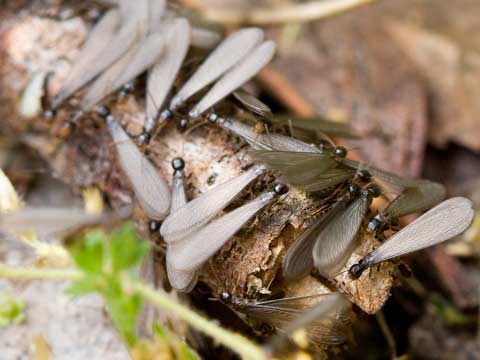
Drywood Termites
Drywood termites get their name because they infest dry, exposed wood, like support beams, eaves, decks, and rooftops. They can be identified by their wings and swarming patterns, which are most common in the fall and spring, however, in San Diego county, we see Drywood termites all year long.

Formosan Termites
Formosan termites were introduced from Southeast Asia the United States. Formosan termites are often called super-termites because of the large size of their colonies and ability to consume wood at a much higher speed than other termites. A mature Formosan termite colony will consume as much as 13oz of wood per day and will severely damage a structure in as little as three months. They are responsible for tremendous damage to property resulting in large treatment and repair costs.
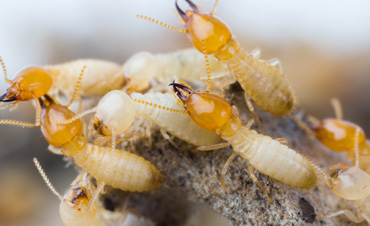
Subterranean Termites
Subterranean termites burrow through soil to infest submerged structures like foundations, support beams, and fence posts. They can be identified by their mud tubes, which act like termite super highways, allowing these termites to access your structure. These termites are especially detrimental because they can seriously affect your structure’s foundation and support structures.
Termite Treatment Options
There are a few treatment options available for full termite control. Based on your needs and budget, our technicians will make their recommendations after a thorough inspection of your structure.

Fumigation
During fumigation, the building is tented for 24-48 hours. Vikane gas is then pumped into the sealed structure, replacing the oxygen. Vikane penetrates hard to reach areas like walls voids, attic spaces, eaves and door frames. After treatment, our technicians will remove the tent and air out the structure. We will thoroughly inspect the structure before we allow occupants to return. Fumigation service is warrantied for 3 years after service.
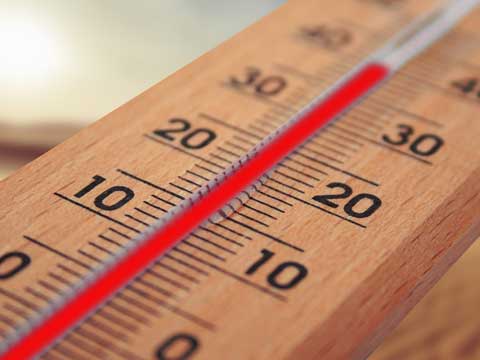
Heat Treatment
Heat is a relatively new treatment option for termites. Much like fumigation, heat will penetrate areas of the structure that cannot be reached by traditional pesticide applications. Heat treatments can be completed in a matter of hours and do not require occupants to be out of the house for more than an afternoon.
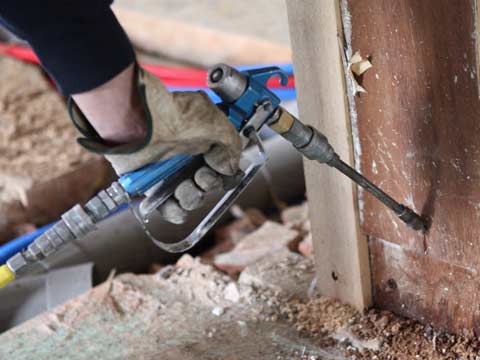
Local Treatment
Local treatment is a great option for small scale infestations or smaller budgets. After a thorough inspection is completed, our technicians may recommend localized spot treatment based on their findings. You will not need to leave the house for this treatment and prep, if any, will be minimal.

Orange Oil
Orange oil is a non-traditional treatment option used to rid exposed wood structures of termites. It works by injecting the product into the wood structures. Orange oil destroys termites and their eggs quickly and without using traditional pesticide methods like fumigation. Service time is quick and easy and doesn’t require you to be out of the home during treatment.
Termite Wood Damage & Structural Defects
Natural forces like earthquakes and tornadoes can cause a wake of destruction. Fortunately, they have taught us something about the kind of home they are most likely to damage. It turns out that strong forces “pick on” homes and buildings that have structural defects. Homes that are well built and maintained are more likely to come through a major calamity in much better shape.
A structural defect can be the result of a design or construction flaw and makes your home weaker. Weakening can also be caused by anything that attacks the structural wood. This includes beetles, fungi, termites and carpenter ants. Unchecked, these pests can reduce the strength of wood by as much as 80%, leaving your home susceptible to widespread damage. The stronger the force, the more likely that force will cause severe, and perhaps irreparable, damage to the home.
The porch column that has a masonry exterior can conceal termite- damaged wood inside. The column could break during an earthquake. Had the wood been intact, the column may very well have come through unharmed. Be vigilant in keeping your home in good repair and free of wood-destroying pests. Don’t hesitate to have inaccessible areas opened so they can be inspected for hidden damage.

Termite Trouble Spots
Any structure with wood looks and smells like a big juicy steak to termites. These pests have an uncanny ability to locate wood both by smell and by random searching, even when dirt, cement, or stucco hides the wood. There are certain situations that encourage problems with termites. Here are some common termite trouble spots:
- Cracks in concrete foundations and foundation walls allow termites hidden access to wood.
- Soil in contact with wood allows termites easy access. This includes posts set in the ground, soil pushed up against the wood in a structure, concrete porches filled with soil that rests against wood structural members, wooden porch steps that rest on soil, etc. Do-it-yourselfers often erect wooden trellises or fences with posts directly in the ground, and then connect these to the house.
- Unsolved moisture problems like poor grading that directs water toward a structure, dripping faucets, and leaking pipes all attract termites, which need moisture to survive. Shrubbery or vines that block the airflow through ventilation openings also cause problems.
- Extra wood like tree stumps and large dead roots, buried form boards, wood chip mulching, and firewood stacked on the ground attracts termites. The pests get started in these, then find their way into a structure.
These are just some of the many, many situations that can lead to trouble with termites. A professional termite inspection can spot these and other, less obvious conditions that can lead to problems with various wood-damaging pests.
Guaranteed Results
Both the inside and outside of your home are always under warranty. We guarantee your satisfaction between regular scheduled maintenance services. If ants should show up between services please give us a call and our protection plan offers our customers peace of mind knowing they can call us given an unforeseen invasion.
Email Us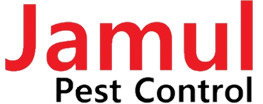
10793 Jamacha Blvd Suite 101, Spring Valley, CA 91978
Call Us Today! (619) 800-7022